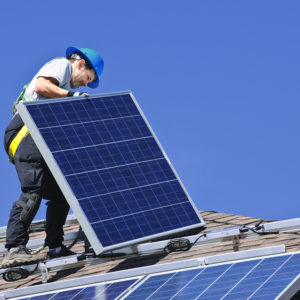America’s solar manufacturing industry is heading for disaster, even though installations of solar panels are growing. The problem is that solar panel imports and domestic production capacity are rising faster than demand. As a result, solar panel prices are plummeting, setting the stage for a “solar apocalypse,” where dozens of American companies could face bankruptcy. Only quick action by the federal government can stem this tide.
Cutbacks and bankruptcies in the industry have already begun. California solar installer Sunworks filed for bankruptcy recently after reporting a third-quarter loss of $36 million. Similarly, SunPower, one of the early U.S. developers of solar cells, just announced a $247 million loss for 2023. And Massachusetts-based manufacturer Cubic PV has abandoned plans to produce solar wafers.
After the August 2022 passage of the Inflation Reduction Act (IRA), dozens of companies have announced plans for new or expanded solar panel production. If all these plants are built, annual capacity could reach 86 gigawatts.
However, the United States imported 30 gigawatts of solar modules last year, giving the nation a potential annual supply of 116 gigawatts. That’s far more than is needed, considering that the country installed 33 gigawatts of solar panels in 2023 — and is likely to add 36 gigawatts in 2024.
China dominates the global solar industry. It makes more than 90 percent of the world’s solar wafers, an essential component for solar panels. Additionally, Chinese companies have jumped on the IRA and are investing heavily in U.S. plants. Chinese-owned companies account for 31 gigawatts, or 35.9 percent of planned U.S. production. In comparison, U.S.-owned companies account for 29 gigawatts, or 33.8 percent.
The IRA’s tax credits are creating a situation of plentiful U.S. supply. The solar panel tariffs enacted first by President Barack Obama and then by President Donald Trump are today like Swiss cheese — so full of holes that importers are paying an effective tariff rate below 1 percent. As a result, supply is set to outstrip demand for years.
With such a huge oversupply, the market price for solar modules will continue to fall. Module prices have fallen by more than 50 percent since 2016 — to 39 cents a watt as of 2022. Reports from manufacturers suggest that modules are now attracting prices in the 30 cents per watt range. It’s difficult for U.S.-based companies to stay in business at that level.
One of the goals of the IRA was to build a robust, domestic solar manufacturing industry. It’s now clear that tax credits aren’t sufficient to do that.
Congress should implement quotas that can hold imports to a sensible level. Since the United States is likely to install 36 gigawatts of solar this year — with 10 gigawatts coming from domestic sources — the 2024 quotas could start at 26 gigawatts. That number could drop by 5 gigawatts yearly thereafter, giving U.S. producers the confidence to increase their production and meet market demand.
Chinese companies will undoubtedly look for ways to circumvent import quotas. In response, the United States should also set a price floor for solar modules. Companies selling below this floor would lose access to U.S. tax credits.
Chinese companies should be deemed ineligible for U.S. solar tax credits. Not one U.S.-owned solar panel producer operates in China. Why should those companies be allowed to operate in the United States and extend their global monopoly?
Federal institutions should be required to buy only U.S.-produced solar panels. That would help establish reliable, secure demand for domestic producers.
The United States faces a choice — a market controlled by China or by a rational, U.S.-based industry insulated from China’s predatory domination. Otherwise, America faces a wave of solar bankruptcies that will discredit the IRA’s pro-American, pro-climate, pro-worker industrial policies. Congress and the White House must reinforce the IRA’s tax credits with import quotas and price floors to guarantee a robust and secure future U.S. solar industry.


